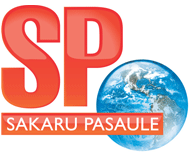|
ANNOTATION Revolution in communication branch is not as fast and sudden as one would like. In spite of this the most advanced technological solutions like xDSL, VoIP, VoATM, VPN have reached not only CeBIT, but also Latvia. Voice, data and Internet convergence intoa common network these are also the key themes of the present issue of Sakaru Pasaule, offered by the well-known companies Alcatel, Siemens, DATI Group, Lattelekom, Ericsson, Soft-tronik, Belam, DAN Communications. Spring is also time for the annual international exhibition Baltic IT&T taking place in Riga. So the present SP issue might serve as a notebook-size exhibition to our readers.
In this issue:
The 21st century house pages 3637The last shriek of fashion is home computer network. It will connect computers and home electronic devices into a common broadband network. Several well-known computer companies propose their solutions for the 21st century house. The design elaborated by Sun Microsystems envisages the computerisation of the whole dwelling. Sun together with GTE, Whirlpool, Bosch, Siemens and other companies create a vast house network with Internet connection. Connecting a dishwasher, microwave oven or refrigerator to the Internet, not only remote checking of technical state of thesedevices but also repairing of some smaller faults directly from a computerised system in producer's office would be possible.
New business directions of 118 pages 6263One of the fastest growing business segments of Lattelekom is its Call centre services. The new service system is based on computer telephone integration (CTI) allowing to sort out automatically the incoming traffic and to route each call to the right operator. Recently a quite new direction of operator services telemarketing was introduced in Lattelekom. It allows not only to make telephone inquiries on behalf of customer but also accept telephone orders, sell goods and services via phone, manage customer data base service, send different kinds of information, invitations etc. To the opinion of experts Latvia could be one of the countries where Call centre services have great future prospects. It could be among the most successful Call centre countries in Europe, approaching the level of Ireland and the Netherlands.
How to turn megabits into megabucks? pages 86-87An important trend in the new telecommunication era is the move toward IP-based technology. As bandwidth requirements continue to expand, IP networks are considered a more economical way to send data. Instead of reserving a phone line in circuit switching systems, IP transfers packets based on demand.
Many of the telecommunication companies are updating their backbone networks to support data and multimedia services that can be rolled out in the future. Solutions such as Ericsson's Engine allow operators to convert their standard ISDN services into IP/ATM networks that allow these companies to offer services beyond voice. With the converged network, created by Engine, the servers look after multiple tasks: some may handle phone calls while others manage video conferencing or e-commerce. An operator who wants to offer another service, can add another server. Such system offers very flexible business development that is especially convenient for those operators whose future prospects are tied closely with multimedia communications.
Test kits for cable TV networks pages 98-99The long time experience says that 75 per cent of all problems in the cable TV are generated in the home installations. It is not only thebasic source of faults but usually also the main generator of distortions. The company Wawetek Wandel Goltermann has developed digital test kits for remote checking, scanning and eliminating the faults. It has a complete solution for cable TV network installation, troubleshooting, maintenance and monitoring. These products are very useful not only for installers but also for cable TV operators as they save time and money. These advanced digital technologies are now available also in Latvia.
Evolution of mobile networks: multimedia messagingMultimedia Messaging (MMS) developed from SMS and Picture Messaging services and is a logical result of their evolution. By means of Multimedia Messaging the user can supply common SMS with much richer content like photos, images, voice clips and video clips. In a quite near future messages would be sent not only from mobile to mobile but also from e-mail to mobile. Multimedia messages will open huge value-added-service capabilities, especially sending person-to-group messages. In quite a near future such messages will take up to 8090 per cent of the messaging market.
MMS with Digital Image Input is the next step towards visual mobile communications. It is a simple, easy-to-use service for sending a photo together with a text from one mobile device to another. Audio and video clips the next stage of evolution will provide multimedia messages with even richer content.
|
|



